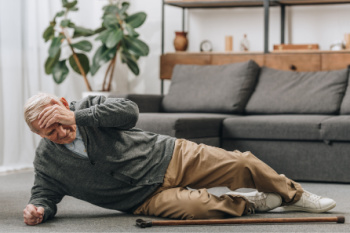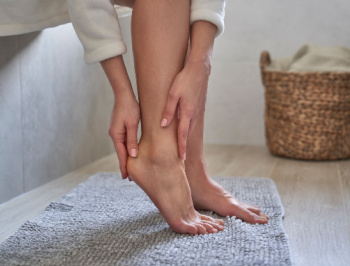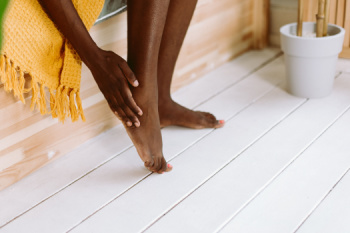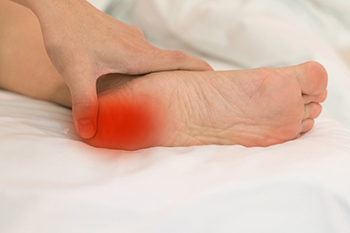
Enhancing foot circulation is critical for overall foot health and can be achieved through several practical methods. Elevating the feet above heart level helps facilitate blood flow back to the heart, reducing swelling and promoting circulation. Managing stress levels is beneficial, as stress constricts blood vessels, impacting circulation negatively. Compression stockings provide gentle pressure that aids blood return from the feet to the heart, especially useful for those who stand or sit for long periods. Regular stretching exercises, such as ankle circles and toe curls, stimulate circulation and maintain flexibility in the feet and ankles. Incorporating daily walks or light aerobic exercises improves cardiovascular health, enhancing overall circulation throughout the body, including the feet. If you have symptoms of poor foot circulation, it is suggested that you contact a podiatrist who can help you to manage this condition.
Poor circulation is a serious condition and needs immediate medical attention. If you have any concerns with poor circulation in your feet contact one of our podiatrists of InStride Family Foot Care. Our doctors will treat your foot and ankle needs.
Poor Circulation in the Feet
Poor blood circulation in the feet and legs is can be caused by peripheral artery disease (PAD), which is the result of a buildup of plaque in the arteries.
Plaque buildup or atherosclerosis results from excess calcium and cholesterol in the bloodstream. This can restrict the amount of blood which can flow through the arteries. Poor blood circulation in the feet and legs are sometimes caused by inflammation in the blood vessels, known as vasculitis.
Causes
Lack of oxygen and oxygen from poor blood circulation restricts muscle growth and development. It can also cause:
- Muscle pain, stiffness, or weakness
- Numbness or cramping in the legs
- Skin discoloration
- Slower nail & hair growth
- Erectile dysfunction
Those who have diabetes or smoke are at greatest risk for poor circulation, as are those who are over 50. If you have poor circulation in the feet and legs it may be caused by PAD and is important to make changes to your lifestyle in order to reduce risk of getting a heart attack or stroke. Exercise and maintaining a healthy lifestyle will dramatically improve conditions.
As always, see a podiatrist as he or she will assist in finding a regimen that suits you. A podiatrist can also prescribe you any needed medication.
If you have any questions please feel free to contact our offices located in Concord, Charlotte, and Salisbury, NC . We offer the newest diagnostic and treatment technologies for all your foot and ankle needs.

 Everyday foot care
Everyday foot care

 Sever's disease
Sever's disease